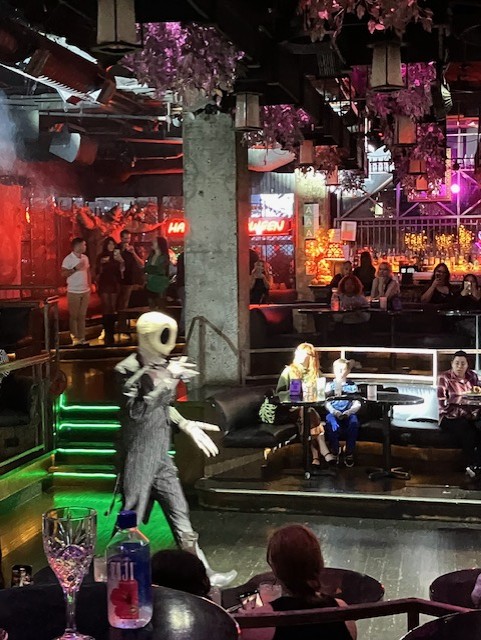The ingenuity of Emily St. John Mandel’s Station Eleven lies chiefly in how the novel weaves together its characters’ seemingly intertwined destinies, setting readers up to anticipate a climatic reveal in which the coincidences that crisscrossed the lives of Kirsten Raymonde and Tyler Leander culminate in a satisfying plot twist that confirms what we all crave—meaning and intention behind the randomness of existence. Spoiler alert: it doesn’t. It didn’t matter that the two characters’ lives crossed paths in seemingly uncanny ways since they were kids. None of it mattered; it was all just pure coincidence. An unlikely coincidence thrills even the most pragmatic materialist because it hints at a reason for the ridiculous and a justification for the unexplainable. “Weird” coincidences often provide the first stirrings of superstition or religion and can feed religious zealotry such as the kind exhibited by the fictional asshole, Tyler Leander. As a staunch atheist, I try to resist any such stirrings excited by serendipity. And yet, while I really doubt there’s a magical man in the sky who sees you when you’re awake and watches you while you sleep, and in general harbors an extremely unhealthy obsession for humans, I must admit that I’m not entirely convinced that everything ends with the physical. Like the characters in Station Eleven who chanced upon a haunted nursery, I must acknowledge that phenomena occur for which there is no scientific explanation.
I was living in one of my first homes (which means, although I can’t recall my exact age at the time, I must’ve been three or four, certainly not yet five years old) when I discovered that whenever I woke up in the middle of the night, I would see the flying lights. They were small spheres of light, a whole cluster of them, that would slowly float into the dark bedroom. I know this is odd now, as a grown-up, but I remember the way my naïve child mind took it for granted that it was just something that happened in the wee hours, and if my grandmother, snoring beside me, would wake up one night at that time, she would see them too. The lights were interesting to me, but I remember no fear or confusion at all; I was too young to know that those floating lights weren’t supposed to appear.
It’s been years since I’ve seen floating lights, or indeed, anything out of the ordinary, but once you’ve had a glimpse of the improbable, it’s impossible to unsee it; you’ll always be mindful that sometimes, mysterious lights appear where no light, spherical or otherwise, should. This doesn’t mean one must conclude that something divine or “intelligent” is at work. It’s simply an acknowledgement that our five senses are inadequate to perceive certain phenomena (microorganisms were imperceptible until the invention of the microscope, and x-rays were unobservable until the invention of x-ray imaging technology). There are things in our world weirder, more bizarre, than even the fertile imagination of Tim Burton could conceive of, and just because they are not readily accessible to the senses doesn’t make them any less real. I like to remind myself of this from time to time. The annual celebration of Halloween (or its routine observance, at a restaurant like Beetle House), despite being widely considered just a whimsical bit o’ fun for the kids, is such a reminder: that the totality of the universe’s awesomeness isn’t capable of being beheld and experienced only through physical means. Beetle House is a very unsubtle reminder of how truly weird the world is, and allowing oneself to be reminded occasionally is good for the, ahem, “soul.”





